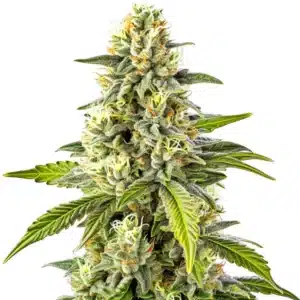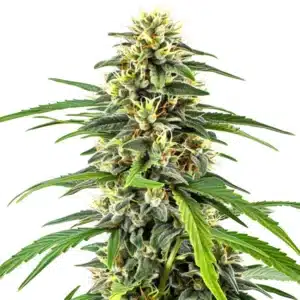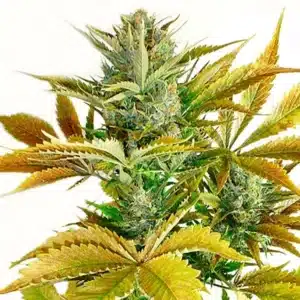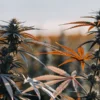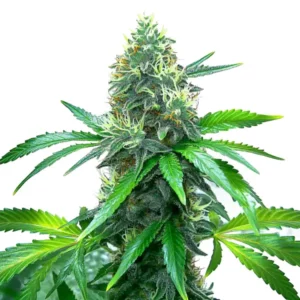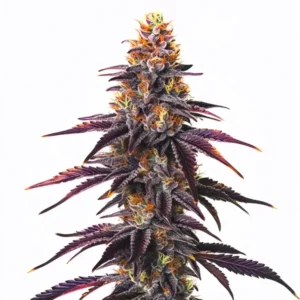
How Light Intensity Affects Transpiration in Cannabis
How light intensity affects transpiration in cannabis is a key factor in knowing plant health and growth. Light intensity plays a crucial role in the way cannabis plants grow and thrive. It directly influences transpiration, which is the process where plants release water vapor into the air. When light intensity increases, the rate at which a cannabis plant transpires also tends to rise. This is because higher light levels encourage the stomata, the tiny openings on leaves, to open wider, allowing more water to escape.
Transpiration is vital for several reasons. It helps cool the plant, keeps nutrients moving, and maintains turgor pressure, which is the rigidity in plant cells. When thinking about how light intensity affects transpiration in cannabis, it’s essential to remember that too much of it can lead to excessive water loss. This can stress the plant, making it crucial for growers to balance light intensity with their plants’ needs.
Recommended Strains
Cheese
|
|
THC | 14% - 18% (Medium) |
|
|
Type | Feminized |
|
|
Yield | Medium |
|
|
Phenotype | 60% Indica / 40% Sativa |
Amnesia Haze
|
|
THC | 18% - 22% (Medium) |
|
|
Type | Feminized |
|
|
Yield | High |
|
|
Phenotype | 30% Indica / 70% Sativa |
Different strains of cannabis may respond uniquely to light intensity. For instance, strains like Blue Dream, available at Blimburn Seeds, might have different transpiration rates compared to others. This means growers need to tailor their lighting strategies to each specific strain for optimal growth.
Impact of Light Intensity on Cannabis Transpiration
The impact of light intensity on cannabis transpiration is significant. As light hits the plant’s surface, stomata open to allow carbon dioxide in for photosynthesis. However, this also lets water vapor escape. The relationship between light levels and transpiration rate in cannabis is complex, as environmental factors like humidity and temperature play a role too.
Strains like OG Kush, which you can find on Blimburn Seeds, might react differently to light variations. Increased light intensity can lead to faster growth but also higher water usage. Growers should monitor their plants closely, adjusting water supply as needed to prevent dehydration.
Additionally, knowing the impact of light intensity on cannabis transpiration can guide growers in optimizing their cultivation practices. By using precise lighting strategies, growers can enhance plant health and productivity, ensuring that cannabis plants receive the ideal amount of light for their specific needs. This approach not only supports efficient water use but also contributes to higher quality yields.
Moreover, technological advancements such as LED lights with adjustable spectrums can aid in fine-tuning the light environment. These lights provide an opportunity to simulate natural light conditions, allowing growers to mimic outdoor environments more effectively. This level of control helps manage the effects of varying light intensity on cannabis water loss, ultimately enhancing the overall growth cycle.
Practical Examples of Light Intensity and Transpiration
Imagine a sunny day in your grow room. The lights are bright, and your cannabis plants are soaking it all in. But alongside this growth spurt, they’re also losing water rapidly. This is a direct demonstration of how different light intensities influence cannabis transpiration. If the light is too intense, your plants might start to wilt.
In contrast, on a cloudy day, or with lower light settings, the transpiration rate slows down. This means less water is lost, but growth can also be slower. It’s a balancing act that every grower needs to master. Strains like Amnesia Haze from Blimburn Seeds can offer insights into how varying light intensity affects cannabis water loss.
To further illustrate, consider a scenario where a grower experiments with different light setups. By adjusting light intensity and observing plant responses, they can pinpoint which levels promote optimal transpiration without causing stress. Documenting these findings enriches the grower’s knowing of how light intensity affects transpiration in cannabis, leading to more refined cultivation practices.
For those new to cannabis cultivation, engaging with communities and forums can provide valuable insights into how different light intensities influence cannabis transpiration. Sharing experiences with other growers allows for knowledge exchange, which can enhance one’s ability to manage light and water dynamics effectively. This collaborative approach fosters continuous learning and improvement in growing techniques.
Promos & Deals
Effects of Varying Light Intensity on Cannabis Water Loss
Cannabis plants, like any other, need water to survive. The effects of varying light intensity on cannabis water loss can be profound. When light is abundant, water loss increases, which can lead to nutrient uptake issues if not managed well. This is why knowing the role of light intensity in cannabis plant transpiration is critical.
Too little light can also present challenges. While the transpiration rate decreases, so does the plant’s ability to photosynthesize efficiently. This can hinder growth and lead to other health issues. Therefore, it is not just about providing more light but ensuring the right amount of light for each strain and growth stage.
Furthermore, the relationship between light levels and transpiration rate in cannabis highlights the necessity of precise environmental control. By regulating light intensity alongside factors like humidity and temperature, growers can create an environment that supports healthy transpiration without overwhelming the plant’s water needs. This balance is crucial for cultivating resilient and productive cannabis plants.
Besides, monitoring tools such as hygrometers and light meters can assist in maintaining optimal conditions. These devices enable growers to track changes in the growing environment, allowing for timely adjustments. By knowing the effects of varying light intensity on cannabis water loss, growers can make informed decisions that enhance plant health and yield potential.

Adjusting Light Intensity for Optimal Growth
Adjusting light intensity is all about finding the sweet spot for your cannabis plants. It’s beneficial to start with moderate light and observe your plants’ responses. If the leaves appear healthy and growth is steady, you probably have the right setting. However, if leaves curl or turn yellow, it might be a sign of too much light.
For first-time growers, using a light meter can help in maintaining consistent light levels. Experienced growers often learn to read their plants, adjusting lights based on visual cues and experience. Strains like Cheese, listed on Blimburn Seeds, can serve as a case study for how different strains react to light adjustments.
As growers become more adept at adjusting light intensity, they can experiment with advanced techniques such as light cycle manipulation. By altering the duration and intensity of light exposure, it’s possible to influence growth patterns and maximize yield. Knowing the function of light intensity in cannabis plant transpiration is key to mastering these methods.
Moreover, staying updated with the latest research on how light intensity affects transpiration in cannabis can provide new insights and strategies. Scientific advancements continue to shed light on the complexities of plant physiology, offering growers innovative solutions to optimize their cultivation practices. Embracing these developments can lead to more effective and sustainable growing techniques.
Frequently Asked Questions
How does light intensity influence the transpiration rate in cannabis?
Light intensity directly affects the transpiration rate in cannabis by influencing how much the stomata open. When light is intense, the stomata open wider to facilitate photosynthesis, causing more water to evaporate from the leaves. This process helps maintain the plant’s temperature but requires careful water management to prevent stress.
Balancing light intensity with environmental conditions like humidity and temperature is crucial. High light levels in dry environments can lead to rapid water loss. Ensuring adequate humidity and using fans to circulate air can help manage these conditions effectively, promoting healthy plant growth.
Knowing the relationship between light levels and transpiration rate in cannabis is essential for achieving optimal growth conditions. By tailoring light intensity to the specific needs of each strain, growers can enhance transpiration without compromising plant health. This approach supports robust growth and maximizes yield potential.
Furthermore, integrating technology such as automated lighting systems can streamline the process of managing light intensity. These systems allow growers to program specific light schedules, ensuring consistency and precision in light delivery. Leveraging such tools can improve the overall efficiency and effectiveness of cannabis cultivation.
What is the impact of light intensity on cannabis plant health?
Light intensity impacts cannabis health by dictating the rate of photosynthesis and transpiration. Adequate light promotes lush growth and robust health, while excessive light can cause leaf burn and excessive water loss, stressing the plant. Conversely, too little light can stunt growth and lead to weak plants.
It’s essential to tailor light levels to the specific needs of the cannabis strain you’re growing. Some strains, like those found on Blimburn Seeds, may require more light, while others thrive with less. Monitoring plant health and adjusting light accordingly can lead to a successful harvest.
Analyzing the impact of light intensity on cannabis plant health involves a holistic approach that considers multiple growth factors. By integrating knowledge of how light intensity affects transpiration in cannabis with other cultivation practices, growers can create a harmonious environment that supports plant vitality and productivity.
Additionally, regular assessments of plant health through visual inspection and measurement can help identify any adverse effects of light intensity. By staying attuned to the signs of plant stress, such as discoloration or wilting, growers can make timely adjustments that safeguard the health and yield of their cannabis crops.
How can I adjust light intensity for different cannabis strains?
Adjusting light intensity involves knowing the unique requirements of each cannabis strain. Start by researching the strain’s optimal light conditions. For instance, a strain like Blue Dream may thrive under different light settings compared to OG Kush. Experiment with light settings while observing plant responses.
Using adjustable LED lights can make this process easier. These lights allow you to control intensity and spectrum, providing flexibility. Documenting your observations helps in refining your approach over time, ensuring each strain receives the ideal amount of light for optimal growth.
To fine-tune light intensity adjustments, growers can utilize data-driven approaches that incorporate environmental monitoring. By tracking variables such as temperature, humidity, and light exposure, growers can develop a comprehensive knowing of how different light intensities influence cannabis transpiration and overall plant performance.
Furthermore, collaborating with other growers and participating in research initiatives can expand one’s knowledge of strain-specific light requirements. Sharing experiences and insights contributes to a deeper knowing of the nuances involved in optimizing light conditions for diverse cannabis strains, ultimately leading to more successful cultivation outcomes.
Why is transpiration important for cannabis growth?
Transpiration is vital for cannabis growth as it helps with nutrient uptake, cooling, and maintaining internal pressure. When water evaporates from the leaves, it pulls water and nutrients up from the roots, supporting overall plant health. This process is crucial for healthy growth and development.
However, managing transpiration is key. Excessive transpiration due to high light intensity can lead to nutrient deficiencies and stress. Balancing light, temperature, and humidity ensures that transpiration supports growth without causing harm to the plant.
Exploring the role of light intensity in cannabis plant transpiration provides valuable insights into optimizing this essential process. By knowing how light intensity affects transpiration in cannabis, growers can implement strategies that enhance nutrient absorption and support robust plant development.
Moreover, maintaining an optimal transpiration rate contributes to overall environmental stability within the grow space. By managing factors such as airflow and light exposure, growers can create conditions that promote healthy transpiration, leading to vigorous growth and improved yield quality.
Can too much light intensity harm my cannabis plants?
Yes, too much light intensity can harm cannabis plants. Excessive light can lead to leaf burn, dehydration, and nutrient imbalances as the plant tries to compensate for rapid water loss. This stress can stunt growth and reduce yields if not addressed promptly.
To prevent this, gradually adjust light intensity and monitor plants closely. Look for signs of stress, such as curled or discolored leaves, and adjust your lighting setup accordingly. Ensuring that your light setup is compatible with each strain’s needs is essential for healthy cannabis cultivation.
Knowing the effects of varying light intensity on cannabis water loss is critical in preventing damage from excessive light exposure. By closely observing plant responses and adjusting light conditions accordingly, growers can mitigate the risk of light-induced stress and promote sustainable growth.
Incorporating shading techniques or using diffused lighting can also help alleviate the impact of excessive light intensity. These methods reduce direct light exposure, preventing potential harm while still supporting adequate photosynthesis and transpiration processes. This balanced approach ensures that plants remain healthy and productive throughout the growth cycle.


